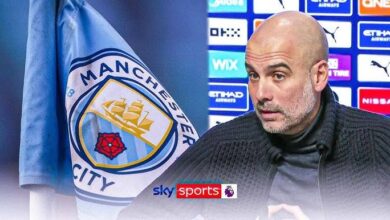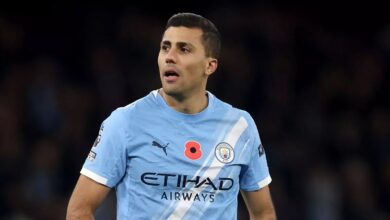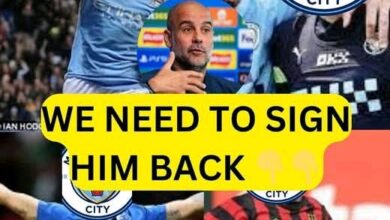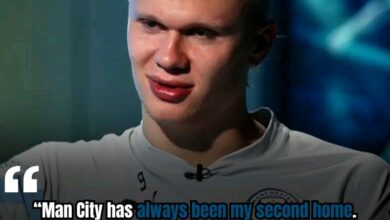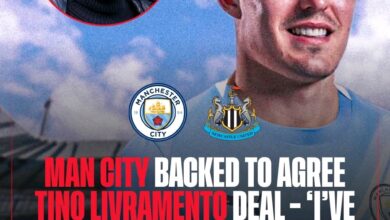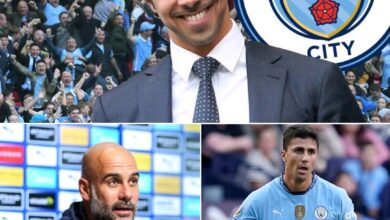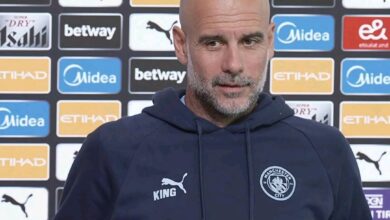Real Madrid ‘plan’ to exploit Man City ‘dilemma’ with Rodri signing after top target ‘escapes’
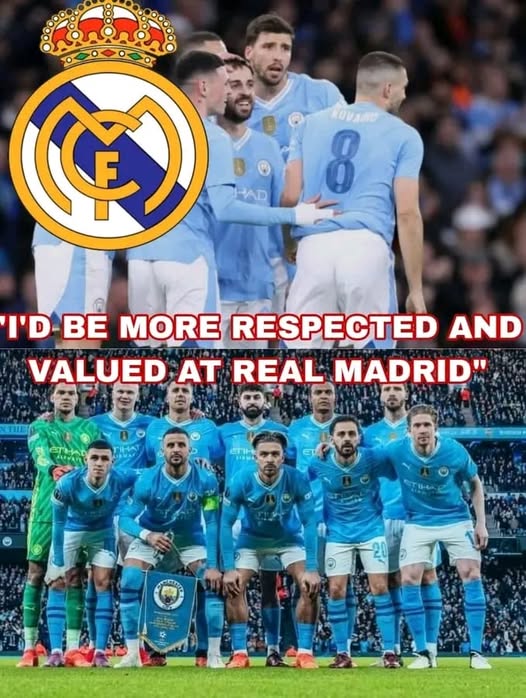
The world of elite football transfers has evolved into a sophisticated chess game where timing, financial acumen, and strategic patience often determine success more than pure spending power. Real Madrid’s reported interest in Manchester City’s Ballon d’Or-winning midfielder Rodri exemplifies this modern approach to transfer market navigation. As the summer of 2025 unfolds, Los Blancos find themselves in a position that requires both tactical flexibility and long-term vision, particularly after missing out on their primary midfield target.
The Spanish giants’ pursuit of Rodri represents more than just an attempt to secure a world-class player; it embodies a calculated response to the evolving dynamics of modern football economics, where contract situations, release clauses, and player power have fundamentally altered how the biggest clubs conduct their business. This comprehensive analysis explores the multifaceted nature of Real Madrid’s approach, the implications for all parties involved, and the broader context that makes this potential transfer one of the most intriguing storylines in contemporary football.
Rodri: The Complete Modern Midfielder
Hernández Cascante, known universally as Rodri, has established himself as the prototype of the modern defensive midfielder. His journey from Atlético Madrid’s youth system to becoming Manchester City’s lynchpin and subsequently winning the Ballon d’Or represents one of football’s most compelling success stories. The 29-year-old Spaniard has redefined what it means to be a holding midfielder in the contemporary game, combining traditional defensive duties with progressive passing, tactical intelligence, and an ability to influence matches that extends far beyond statistical measurements.
Rodri’s impact on Manchester City’s success cannot be overstated. His presence in the team has coincided with some of the club’s most successful periods, including their historic treble-winning campaign and multiple Premier League titles. The midfielder’s ability to control tempo, break up opposition attacks, and initiate City’s possession-based approach has made him indispensable to Pep Guardiola’s tactical system. His technical proficiency, coupled with his physical presence and mental fortitude, has earned him recognition as arguably the finest defensive midfielder of his generation.
The devastating ACL injury that sidelined Rodri for most of the previous season served as a stark reminder of his importance to Manchester City. The team’s struggles in his absence highlighted just how central he has become to their tactical identity. His ability to read the game, position himself perfectly, and make crucial interventions at critical moments has established him as one of the most complete midfielders in world football. These qualities, combined with his leadership abilities and professional approach, make him an attractive proposition for any elite club seeking to strengthen their midfield foundations.
Real Madrid’s Midfield Evolution and Strategic Needs
Real Madrid’s interest in Rodri must be understood within the context of their ongoing midfield transformation. The club has been gradually reshaping their central areas following the departures of legendary figures like Casemiro and the aging of other key personnel. While they have successfully integrated younger talents and maintained their competitive edge, the quest for a player of Rodri’s caliber reflects their ambition to secure long-term stability in a crucial position.
The Spanish capital club’s approach to squad building has historically combined strategic patience with opportunistic strikes in the transfer market. Their pursuit of Rodri exemplifies this philosophy, as they appear willing to wait for the optimal moment to make their move rather than rushing into expensive immediate solutions. This patient approach has served them well in previous transfer sagas, allowing them to secure world-class talents at more favorable terms than might otherwise have been possible.
Madrid’s tactical requirements under their current management structure demand a midfielder who can provide both defensive solidity and creative distribution. Rodri’s profile fits these needs perfectly, offering the technical ability to play out from the back, the physical presence to dominate midfield battles, and the tactical awareness to adapt to different game situations. His experience in high-pressure environments and proven ability to perform in crucial matches align with Madrid’s standards and expectations for their key players.
The club’s recent success in the Champions League and domestic competitions has been built on a foundation of tactical flexibility and individual brilliance. Adding a player of Rodri’s caliber would provide additional depth and quality to their midfield options, potentially allowing for greater tactical variation and improved squad rotation. This strategic thinking reflects Madrid’s commitment to maintaining their position at the pinnacle of European football while preparing for future challenges.
The Contract Situation: A Golden Opportunity
The timing of Real Madrid’s interest in Rodri is far from coincidental. With the player’s Manchester City contract set to expire in 2027, the summer of 2026 represents a crucial juncture that could significantly alter the dynamics of any potential transfer. This timeline creates what Spanish media have described as a “sweet situation” for Los Blancos, potentially allowing them to secure one of the world’s best midfielders at a substantially reduced fee.
The economics of modern football transfers have created scenarios where contract situations can dramatically influence player valuations. When a player enters the final year of their contract, clubs face the difficult decision between accepting reduced transfer fees or risking losing valuable assets for nothing. This dynamic has become increasingly common in elite football, with clubs and players’ representatives becoming more sophisticated in managing contract negotiations and transfer timing.
For Manchester City, Rodri’s contract situation presents a significant strategic challenge. The club invested heavily in his development and has benefited enormously from his contributions during some of their most successful seasons. However, the financial reality of potentially losing such a valuable player for free in 2027 could force their hand in 2026, particularly if the player expresses a desire to explore new opportunities.
The reduced transfer fee scenario that Real Madrid appears to be banking on could represent excellent value for a player of Rodri’s caliber. In the current market, defensive midfielders of his quality typically command fees exceeding €100 million, but contract situations can significantly alter these valuations. Madrid’s strategy suggests they are prepared to wait for this optimal moment rather than engaging in expensive bidding wars that might inflate the transfer cost unnecessarily.
The Zubimendi Setback: Adapting to Market Realities
Real Madrid’s pursuit of Rodri has gained additional urgency following their failure to secure Real Sociedad’s Martin Zubimendi, who reportedly chose to join Arsenal for €60 million. This setback illustrates the increasingly competitive nature of the transfer market, where even clubs with Madrid’s prestige and financial resources cannot guarantee success in every pursuit.
Zubimendi’s decision to join Arsenal rather than Real Madrid highlights several important factors in modern transfer negotiations. Financial considerations, including salary packages and signing bonuses, often play decisive roles in player decisions. Arsenal’s willingness to pay the full release clause immediately and offer what has been described as an “astronomical salary” demonstrates the Premier League’s continued financial advantages in the transfer market.
The Zubimendi situation also underscores the importance of timing and relationship management in transfer negotiations. Arsenal’s ability to complete the deal quickly and decisively, while Madrid hesitated or attempted to negotiate alternative terms, may have been the determining factor in the player’s ultimate decision. This experience likely influences Madrid’s approach to future targets, including their strategy regarding Rodri.
Madrid’s adaptation to this setback by refocusing on Rodri demonstrates their strategic flexibility and long-term planning capabilities. Rather than panicking or overpaying for alternative targets, they appear to be maintaining their disciplined approach to the transfer market while identifying opportunities that align with their tactical needs and financial parameters. This measured response reflects the club’s experience in navigating complex transfer situations and their confidence in their ability to secure quality alternatives.
Manchester City’s Dilemma: Balancing Ambition and Pragmatism
From Manchester City’s perspective, the potential departure of Rodri presents both challenges and opportunities. The club has built much of their recent success around the Spanish midfielder’s contributions, making his potential exit a significant tactical and strategic concern. However, the financial realities of his contract situation may ultimately force decisions that prioritize long-term planning over short-term sentiment.
City’s approach to contract management and player retention has generally been characterized by pragmatism and strategic thinking. The club has shown willingness to let valuable players depart when circumstances dictate, preferring to receive transfer fees rather than lose assets for free. This philosophy has served them well in maintaining squad freshness and financial flexibility while continuing to compete at the highest level.
The challenge of replacing Rodri’s contributions cannot be understated. His unique combination of skills and experience has made him virtually irreplaceable in City’s current tactical system. Any potential departure would require significant investment in alternative players and potentially tactical adjustments to accommodate different personnel. This reality may influence the club’s willingness to negotiate with Real Madrid or other interested parties.
However, City’s financial resources and recruitment expertise provide them with options for managing Rodri’s potential departure. The club has demonstrated consistent ability to identify and develop midfield talents, and the transfer fee received for Rodri could fund multiple acquisitions that strengthen the overall squad depth. This strategic flexibility may ultimately influence their decision-making process regarding contract negotiations and potential transfers.
The Broader Transfer Market Context
Rodri’s potential move to Real Madrid must be understood within the broader context of contemporary transfer market dynamics. The increasing influence of player power, the importance of contract timing, and the financial pressures facing even elite clubs have fundamentally altered how transfers are conducted. Madrid’s patient approach reflects an understanding of these evolving dynamics and their commitment to operating within sustainable financial parameters.
The Premier League’s continued financial dominance has created challenges for clubs in other leagues, including traditional powerhouses like Real Madrid. The ability of English clubs to offer competitive salaries and immediate payment of release clauses has shifted negotiation dynamics and forced other elite clubs to adapt their strategies accordingly. Madrid’s focus on contract situations and strategic timing represents one such adaptation to these changing market conditions.
The influence of agents and player representatives has also become increasingly significant in transfer negotiations. These intermediaries often play crucial roles in shaping player preferences and negotiating complex deals that satisfy multiple stakeholders. Madrid’s success in future negotiations with Rodri may depend partly on their ability to manage these relationships effectively while presenting compelling sporting and financial packages.
The growing importance of squad harmony and tactical fit has also influenced transfer decision-making. Clubs are increasingly focused on acquiring players who complement existing tactical systems and contribute to positive squad dynamics. Rodri’s proven ability to adapt to different tactical approaches and his professional attitude make him an attractive proposition for clubs seeking to maintain high standards both on and off the pitch.
Jack Grealish’s Situation: The Ripple Effects of Squad Management
The exclusion of Jack Grealish from Manchester City’s Club World Cup squad provides additional context to the club’s current squad management challenges. The English winger’s situation illustrates the complex decisions facing elite clubs as they balance squad size limitations, player expectations, and tactical requirements across multiple competitions.
Grealish’s potential departure from City reflects the harsh realities of squad management at the highest level. Despite his significant transfer fee and previous contributions, the player appears to have fallen down the pecking order under Pep Guardiola’s tactical system. This situation demonstrates how quickly circumstances can change for even expensive acquisitions when tactical requirements evolve or new players emerge.
The reported interest from Everton and Bayer Leverkusen in Grealish highlights the different levels of the transfer market and how player movements can create opportunities across various clubs. A loan arrangement might benefit all parties, allowing Grealish to regain regular playing time while providing City with financial flexibility and the option to reassess the player’s future role.
These squad management decisions indirectly impact other transfer activities, including potential moves for players like Rodri. The need to balance squad composition, satisfy player ambitions, and maintain tactical flexibility influences how clubs approach contract negotiations and transfer planning. City’s handling of various player situations will likely impact their ability to retain key performers and attract new talents.
The Financial Implications and Market Valuation
The financial aspects of Rodri’s potential transfer to Real Madrid involve complex calculations that extend beyond simple transfer fees. The player’s current market value, estimated at well over €100 million in normal circumstances, could be significantly affected by his contract situation and the timing of any potential move.
Real Madrid’s strategy of waiting until 2026 to make their move reflects sophisticated financial planning that accounts for depreciation in player values as contracts approach expiration. This approach has become increasingly common among elite clubs seeking to maximize transfer value while minimizing financial risk. The potential savings compared to acquiring Rodri in the current market could be substantial, allowing Madrid to invest in other areas of squad improvement.
However, the financial calculations must also account for the risks associated with waiting. Other clubs may emerge as competitors for Rodri’s signature, potentially driving up costs even in a reduced-fee scenario. Additionally, the player’s age and potential decline in performance over the next year represent factors that could influence the ultimate value proposition of any transfer.
The impact on Manchester City’s financial planning is equally significant. The club must balance the immediate competitive benefits of retaining Rodri against the financial implications of potentially losing him for free in 2027. The transfer fee received in 2026 could fund multiple squad improvements, but the challenge of replacing Rodri’s contributions might require even greater investment in alternative players.
Tactical Analysis: How Rodri Would Fit at Real Madrid
From a purely tactical perspective, Rodri’s potential integration into Real Madrid’s system presents fascinating possibilities. His playing style and skill set align closely with the club’s traditional approach to midfield play, combining technical excellence with tactical intelligence and competitive mentality.
Madrid’s current tactical setup could benefit significantly from Rodri’s presence. His ability to shield the defense, distribute possession effectively, and contribute to attacking phases would provide the team with additional tactical flexibility. The Spanish international’s experience in high-pressure situations and proven ability to perform in crucial matches align perfectly with Madrid’s expectations for key players.
The midfielder’s compatibility with Madrid’s existing personnel represents another attractive aspect of his potential acquisition. His understanding of Spanish football, combined with his experience playing alongside several current Madrid players at international level, could facilitate smooth integration into the squad. This tactical and cultural fit often proves crucial in determining the success of high-profile transfers.
Rodri’s versatility in different tactical systems could also provide Madrid with greater strategic options. His ability to adapt to various formations and tactical approaches would allow the coaching staff to implement different game plans depending on opposition and circumstances. This flexibility has become increasingly valuable in modern football, where tactical adaptation often determines competitive success.
The Player’s Perspective: Career Considerations and Ambitions
From Rodri’s viewpoint, the potential move to Real Madrid represents both opportunity and risk. At 29, he is entering the prime years of his career and must carefully consider how any transfer decision might impact his sporting ambitions and personal circumstances.
The attraction of playing for Real Madrid extends beyond financial considerations to include prestige, competitive opportunities, and the chance to fulfill childhood dreams. For many Spanish players, representing Los Blancos represents the pinnacle of domestic football achievement. The club’s consistent success in European competitions provides additional appeal for players seeking to compete for the sport’s most prestigious trophies.
However, Rodri must also consider the stability and success he has enjoyed at Manchester City. His role as a key player in one of Europe’s most successful teams provides both security and competitive satisfaction. The risk of disrupting this successful situation must be weighed against the potential benefits of a new challenge at Real Madrid.
The player’s contract negotiations with both clubs will likely involve complex discussions about sporting ambitions, financial terms, and long-term career planning. His decision-making process will probably consider factors including playing time guarantees, tactical role clarity, and the competitive prospects of both teams in upcoming seasons.
The Timeline and Strategic Patience
Real Madrid’s apparent willingness to wait until 2026 to pursue Rodri demonstrates remarkable strategic patience in an era where immediate gratification often drives transfer decisions. This long-term approach reflects the club’s confidence in their current squad and their belief that timing can significantly influence transfer outcomes.
The 12-month timeline until the optimal transfer window provides all parties with time to assess various factors that might influence the final decision. Rodri’s recovery from injury, his performance levels upon return, and his satisfaction with his current situation at City will all play roles in determining whether a transfer materializes.
For Madrid, this extended timeline allows for careful financial planning and strategic preparation. The club can assess their midfield needs, evaluate alternative targets, and structure their finances to accommodate a significant transfer while maintaining compliance with financial regulations.
Manchester City will also benefit from additional time to prepare for Rodri’s potential departure. The club can identify replacement targets, negotiate contract extensions, or explore alternative tactical approaches that might reduce their dependence on any single player. This preparation time could prove crucial in managing the transition if a transfer ultimately occurs.
Conclusion: A Transfer Saga Emblematic of Modern Football
The potential transfer of Rodri from Manchester City to Real Madrid encapsulates many of the defining characteristics of contemporary football transfers. Strategic patience, contract timing, financial planning, and tactical considerations all play crucial roles in shaping the narrative and ultimate outcome.
Real Madrid’s approach demonstrates how elite clubs must adapt to changing market conditions while maintaining their competitive ambitions. Their willingness to wait for optimal conditions rather than overpaying in immediate circumstances reflects sophisticated transfer strategy that other clubs will likely study and potentially emulate.
For Manchester City, the situation highlights the ongoing challenge of balancing player retention with financial pragmatism. The club’s decision-making process regarding Rodri’s future will influence not only their immediate competitive prospects but also their long-term approach to contract management and squad development.
The broader implications of this potential transfer extend beyond the immediate parties involved. The emphasis on contract timing, strategic patience, and value optimization represents trends that are reshaping how the transfer market operates at the highest level.
As the 2026 transfer window approaches, the Rodri saga will continue to develop with implications for multiple stakeholders. Whether the transfer ultimately occurs or not, the strategic approaches employed by all parties will provide valuable insights into the evolving dynamics of elite football transfers.
The story serves as a reminder that in modern football, success often depends not just on financial resources but on strategic thinking, timing, and the ability to navigate complex negotiations while maintaining competitive standards. Real Madrid’s pursuit of Rodri exemplifies these principles and may well define future approaches to high-profile transfer negotiations in European football.







